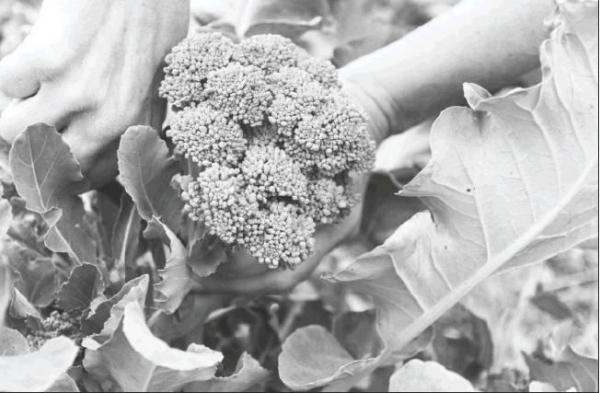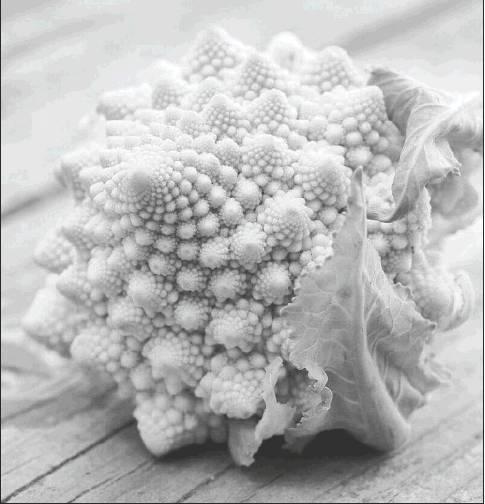Growing Broccoli This Fall
Columnist
Fresh broccoli is one of the highlights of my fall and winter vegetable garden. Broccoli can be grown crisp and delicious in the chilly temperatures of very early spring but especially in the fall. Nowadays, I can’t remember why I disliked broccoli as a child, but I suspect it was its kinship to cabbage and mustards, and the distinctive sharp flavor of that family of vegetable, that was too much for a young veggie skeptic.
Thankfully, I overcame my broccoli boycott, because this is one of the most nutritious vegetables on the planet and as an adult, I am a broccoli enthusiast. It’s also easy to start from transplants or seed, easy to grow, and one of those cool-weather veggies that thrives when not much else does. I want to encourage you to give broccoli a try in your garden, so I thought I’d let you in on just what you need to know to be successful growing it in your garden.
Unlike its cabbage family cousins, broccoli is not grown for its leaves or stems or side shoots, it is grown for its immature flower head. That’s right, the part of the broccoli you eat is a flower bud, if you don’t believe me just leave one in the ground and the head will bloom with an array of little yellow flowers. The secret to growing broccoli is to encourage full, healthy flower heads but to harvest them before they mature (“bolt”) and lose flavor. So, keep that in mind as you work your garden, when you grow broccoli you want to treat it like a flower – except that you pick this flow before it blooms.
There are many varieties of broccoli to choose from, from the popular large-headed varieties, to spicy broccoli Raab, to Romanesco and sprouting varieties. I even grew purple broccoli for the firsttime last fall. Some types of broccoli focus on one main flower head, while others sprout smaller individual florets. Make sure you understand the growing habits of your variety of broccoli in order to harvest properly.
When planting broccoli, you must consider that it is a cool-season vegetable that likes daytime temperatures in the 60s and can tolerate light frost and temps down to the 20s, so a fall planting works best in our area. Many gardening books and websites recommend planting broccoli in early spring for the main harvest, then suggest you leave the plants growing over the summer for a second harvest in the fall. That may work well in a Yankee garden, but it won’t happen in a Texas garden where it will simply suffer from our heat no matter how much shade cloth you use.
In our Texas summers broccoli will “bolt” (go to seed) in the hot weather, which results in a loss of flavor and toughening of texture, then it will just wilt and die. Some varieties are more heat-tolerant than others, but I do not know of any that can take triple digit heat day after day.
Broccoli needs full sun, at least 6 hours per day but morning sun is far better than the heat of the afternoon sun. You will want to ensure your planting bed is ready with a rich, well-draining soil. Because of the short spring growing season, early broccoli is in a race against time and needs high-quality soil amended with plenty of rich compost. But your fall broccoli will want that same rich soil. To improve drainage, you can plant your broccoli in mounds. Broccoli benefits from regular applications of organic fertilizer – remember you are growing flowers here.
Most varieties of broccoli take 3-4 months from planting to harvest while transplants take 2-3 months. Unless you start seeds indoors over the winter, it may be difficult to grow a spring broccoli crop from seed, because the weather will warm too quickly. Fall crops are much easier to start from seed directly in the garden provided you can shade the little sprouts. Plant broccoli seeds about ¼ to ½ inch deep, and transplant to the garden in about 5 weeks.
Honestly though, I think that transplants are the way to go. Whether you start your own indoors or purchase some from your local nursery you should plant broccoli seedlings as soon as the days cool enough that the high temp don’t climb above 95 degrees – even then you need to protect the transplants with shade cloth or by planting them in an area of the garden that gets afternoon shade. If you’re planting broccoli transplants or seedlings, set them a little deeper in the soil than they were in the pot. Space your broccoli plants about 18 inches apart, they can get large and you want to ensure good airflow. Besides, crowding them in only stunts their development and opens a door to insects and disease and none of want that in our garden. Since the fall/ winter growing season is rather long I suggest you plant staggered successive plantings every 2-3 weeks for a longer harvest.
Broccoli grows in a hurry, and it needs a lot of nutrients. Rich compost will help feed your hungry broccoli, but it will also benefit from applications of compost tea or from monthly applications of a balanced organic fertilizer. Like other veggies, broccoli needs to be kept evenly moist. Give broccoli about an inch of water per week, and water deeply (rather than sprinkling) to encourage deep roots, but don’t let your broccoli plants become too dry between waterings.
One of the best things about growing broccoli is that it isn’t plagued by many diseases. The most common insect pests are aphids, cabbage worms, and slugs.
If you do try to grow a spring crop, you’re in a race with the weather to keep your plants from going to seed. Hot soil is the culprit, so take steps to keep the soil cool for as long as possible. Mulch, regular water, and shade covers can prolong your spring broccoli season, and as the weather warms you should harvest more frequently to keep your plants from shifting into seed mode.
When the main broccoli head is several inches in diameter, your broccoli is ready to harvest. The heads should be green, compact, and firm. If your broccoli plant produces side shoots, those florets may be smaller (but just as yummy). If left unharvested, broccoli heads will loosen and open into yellow flowers – if this happens, it’s too late but leave the plants in the ground as the pollinators love them!
I have found that he best way to harvest my broccoli is by using a sharp knife. Simply cut the main stalk of the broccoli at an angle, several inches below the flower head. Continue caring for the broccoli plant – it will likely begin producing side shoots and more broccoli! Those side shoots will never be as large as the main head, but they will be just as delicious and nutritious.
Your fresh, dry broccoli will last in the fridge about a week in a non-airtight container. Wash the broccoli immediately before use. Your home-grown broccoli freezes well too. Cut the florets into pieces, then blanch the fresh broccoli by submerging it in boiling water for one minute, then plunging it into ice water to cool. Drain, dry, and pack the broccoli into airtight plastic bags that way you can enjoy it anytime.
The fall garden is my favorite. One of the wonderful things about living in central Texas is that we can garden twelve months out of the year – don’t miss out on a fall garden!




